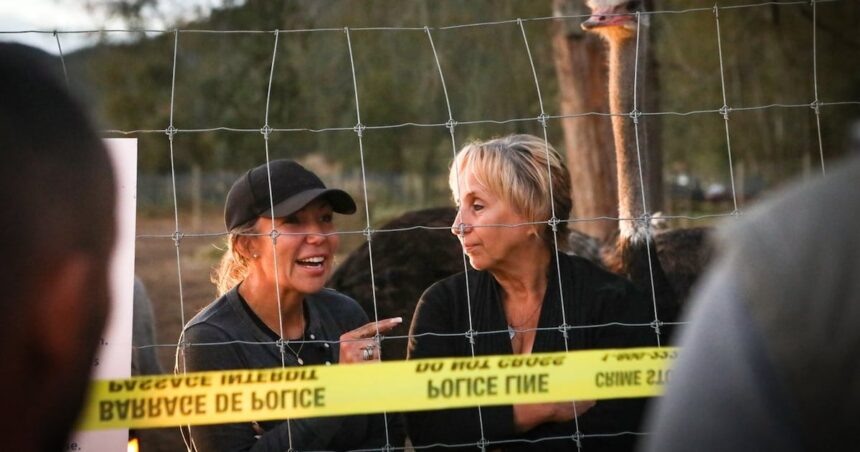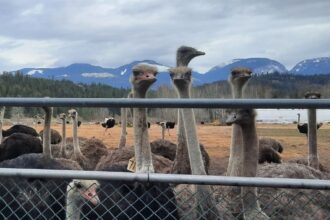In a dramatic escalation of tensions between government regulators and small-scale livestock producers, British Columbia ostrich farmers Alex and Mary Curwain face potential arrest if they don’t vacate their property by Tuesday. The Canadian Food Inspection Agency (CFIA) has issued this ultimatum after the couple refused to comply with orders to cull their flock of 100 ostriches following a single case of avian influenza detected on their farm last month.
“This isn’t just about our livelihood—it’s about our rights as farmers and as Canadians,” Mary Curwain told me during an exclusive interview at their rural property near Armstrong, B.C. “We’ve dedicated 25 years to building this operation, and now we’re being threatened with arrest for protecting animals that show no signs of illness.”
The confrontation highlights growing friction between federal regulatory bodies and agricultural producers across Canada. According to CFIA protocols, a single confirmed case of avian influenza typically triggers a mandatory cull of all birds on the affected premises to prevent disease spread. However, the Curwains have challenged this approach, arguing that their ostriches—unlike chickens—maintain significant physical distance from one another and exhibit no symptoms.
Provincial agriculture records indicate the Curwains’ operation represents one of only three commercial ostrich farms remaining in British Columbia, reflecting the industry’s decline from its peak in the late 1990s. Their resistance has garnered support from both agricultural advocacy groups and civil liberties organizations concerned about regulatory overreach.
“The CFIA’s enforcement methods raise serious questions about proportionality and farmers’ rights,” said agricultural policy expert Dr. Sandra Nolan from the University of British Columbia. “While disease control is essential, we must examine whether one-size-fits-all protocols adequately address the biological realities of different species and farming operations.”
The standoff comes amid heightened concerns about avian influenza across North America. Government data shows British Columbia has recorded 47 cases in commercial and backyard flocks since April, significantly higher than the previous year. CFIA officials maintain their protocols are science-based and necessary to protect both the broader agricultural industry and public health.
“These measures aren’t implemented lightly,” said CFIA regional director Thomas Keller in a statement. “Our mandated approach to highly pathogenic avian influenza is consistent with international standards and designed to prevent potentially catastrophic outbreaks.”
For the Curwains, the financial implications are severe. Their flock, valued at approximately $400,000, represents not only their primary income source but their retirement security. The couple claims government compensation would cover less than half of their actual losses when considering breeding stock value and future income potential.
The farm has become a flashpoint for broader debates about agricultural policy and rural autonomy. Local supporters have established a continuous presence at the property, with some pledging to physically prevent CFIA officials from accessing the farm.
“Small producers are being squeezed out by regulations designed for industrial agriculture,” said neighboring farmer Elaine Morrison, who has joined the Curwains’ support group. “If we lose diverse, family-operated farms like this one, we’re undermining our food sovereignty and regional resilience.”
CFIA officials and RCMP representatives declined to comment on specific enforcement plans but confirmed that obstruction of federal inspectors constitutes a criminal offense. Legal experts note that the Curwains’ options for appeal have narrowed considerably since they failed to comply with the initial order issued August 28th.
As Tuesday’s deadline approaches, the question remains whether this confrontation represents an isolated incident or signals a deeper disconnect between agricultural regulators and the farming communities they oversee. How do we balance necessary disease control measures against the economic and cultural importance of diverse agricultural operations in rural Canada?










